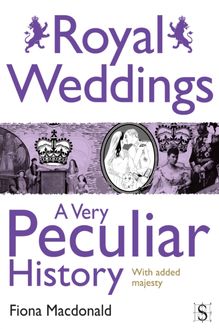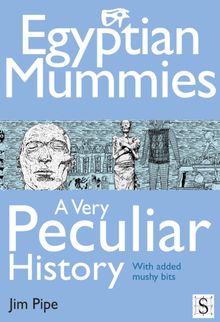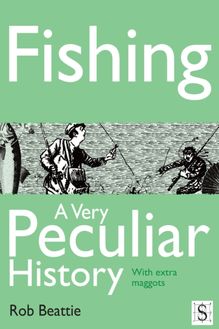-
 Univers
Univers
-
 Ebooks
Ebooks
-
 Livres audio
Livres audio
-
 Presse
Presse
-
 Podcasts
Podcasts
-
 BD
BD
-
 Documents
Documents
-
- Cours
- Révisions
- Ressources pédagogiques
- Sciences de l’éducation
- Manuels scolaires
- Langues
- Travaux de classe
- Annales de BEP
- Etudes supérieures
- Maternelle et primaire
- Fiches de lecture
- Orientation scolaire
- Méthodologie
- Corrigés de devoir
- Annales d’examens et concours
- Annales du bac
- Annales du brevet
- Rapports de stage
La lecture à portée de main
Vous pourrez modifier la taille du texte de cet ouvrage
Découvre YouScribe en t'inscrivant gratuitement
Je m'inscrisDécouvre YouScribe en t'inscrivant gratuitement
Je m'inscrisEn savoir plus
Vous pourrez modifier la taille du texte de cet ouvrage
En savoir plus

Description
Sujets
Informations
| Publié par | Andrews UK |
| Date de parution | 12 janvier 2012 |
| Nombre de lectures | 0 |
| EAN13 | 9781908177988 |
| Langue | English |
Informations légales : prix de location à la page 0,0300€. Cette information est donnée uniquement à titre indicatif conformément à la législation en vigueur.
Extrait
Title Page
KINGS & QUEENS, A VERY PECULIAR HISTORY
With added mushy bits
Written by
Jim Pipe
Created and designed by David Salariya
Publisher Information
First published in Great Britain in MMXII by Book House, an imprint of
The Salariya Book Company Ltd
25 Marlborough Place, Brighton BN1 1UB
www.salariya.com
www.book-house.co.uk
Digital edition converted and distributed in 2012 by
Andrews UK Limited
www.andrewsuk.com
Editor: Jamie Pitman
Assistant editor: Jodie Leyman
Artists: Mark Bergin, Carolyn Franklin, John James, David Salariya, Nick Spender, Lyn Stone, Shirley Willis
© The Salariya Book Company Ltd MMXII
All rights reserved. No part of this publication may be reproduced, stored in or introduced into a retrieval system or transmitted in any form, or by any means (electronic, mechanical, photocopying, recording or otherwise) without the written permission of the publisher. Any person who does any unauthorised act in relation to this publication may be liable to criminal prosecution and civil claims for damages.
Every effort has been made to trace copyright holders. The Salariya Book Company apologises for any omissions and would be pleased, in such cases, to add an acknowledgement in future editions.
Visit our website at
www.book-house.co.uk
or go to
www.salariya.com
for free electronic versions of:
You Wouldn’t Want to be an Egyptian Mummy!
You Wouldn’t Want to be a Roman Gladiator!
You Wouldnt Want to Join Shackleton’s Polar Expedition!
You Wouldn’t Want to Sail on a 19th-Century Whaling Ship!
Dedication
To Meliss, a great Mummy (and beautifully preserved)
JP
Map of Ancient Egpyt
Introduction: What Is A Mummy?
When you hear the word ‘mummy’, what do you think of? King Tutankhamun buried deep in his tomb, or a stiff-legged zombie on the warpath? Until about three hundred years ago, the word was only used to describe mummies from ancient Egypt. It probably comes from the Persian word mumiya , which means bitumen or pitch. Today, we use this black, sticky substance to cover roads. So what does it have to do with ancient corpses?
It all goes back to AD 639, when the Arabs conquered Egypt. Though they banned the Egyptians from making any more mummies, they couldn’t resist taking a peek inside their mysterious tombs. The bandaged bodies they discovered were covered in a black sticky goo which reminded them of bitumen, so the Arabs took the Persian word for bitumen and called these bodies mumiya . They were wrong, it wasn’t bitumen, but as the years went by, mumiya turned into the English word ‘mummy’. (Not everyone agrees: some historians believe the word ‘mummy’ may also have come from the Egyptian Coptic word ‘mum’ which means wax, an important material used in mummification.)
Today, however, the word ‘mummy’ is used to describe any person or animal whose flesh and skin has been preserved after death (skeletons and fossils aren’t considered mummies, as no soft tissues such as flesh or skin are preserved) – including the baby mammoth discovered in the icy wilderness of north-west Siberia (in northern Russia) in 2007.
All sorts of mummies have been uncovered over the years. What makes them different from each other is how they are preserved. Some were created deliberately: the Cloud People of Peru and the Guanche people of the Canary Islands preserved their relatives after death. Other mummies were created by accident. Some bodies were pickled after being buried in sand, tar or mud. Others were freeze-dried in caves or preserved by acidic bog waters.
Normally when an animal dies, bacteria (tiny organisms in the body) eat away at the flesh until only the bones are left behind. Bacteria need water to grow, however, so if a body dries out soon after death, it stops rotting and turns into a mummy. Whether dried by chemicals, extreme cold, or the heat of the desert, a mummy can remain preserved for thousands of years. Remarkably, some mummies have leathery skin and joints that can still be moved.
Some famous mummies
•King Tutankhamun (nicknamed ‘King Tut’) is the only Egyptian pharaoh (king) whose tomb was discovered intact. The solid gold mask and other fabulous treasures found alongside his body have amazed people the world over since their discovery in 1922.
•One of the best-known mummies in the British Museum in London is known as ‘Ginger’, thanks to his shock of red hair. Buried around 3600 BC, he was turned into something resembling a giant prune by the hot, dry sand that encased his body. A female mummy, known as ‘Gingerella’, was buried alongside him.
•According to legend, in 323 BC Alexander the Great (the king of Macedonia who conquered Persia) was buried in a golden coffin filled with white honey. This pickled his body for over 1,000 years until it was stolen.
•English philosopher Jeremy Bentham (1748-1832) asked a surgeon friend to preserve his body after he died. Seated as if he was deep in thought, his well-dressed skeleton is still on display at University College London.
Though mummies have been found all over the world, Egyptian mummies have always grabbed the headlines. They were famous even in ancient times, when the Greek travellers Herodotus and Diodorus Siculus brought amazing tales of the dead back from the banks of the Nile. When the Romans conquered Egypt, they wanted to learn the secrets of the Egyptian mummymakers. Unfortunately, they couldn’t read the ancient Egyptian tomb writing, hieroglyphics. (Things went from bad to worse when, in 48 BC, Julius Caesar accidentally set fire to the famous library at Alexandria, on the Egyptian coast, which contained thousands of ancient scrolls.) The famous Queen Cleopatra was also fascinated by the ancient Egyptians. Although from a Greek family, she learnt the Egyptian language and copied the ancient style of dress, perhaps to remind other Egyptians that she was one of them.
In more modern times, it was the Victorians who really sparked an interest in ancient Egypt. In the 19th century, wealthy English tourists travelling to Egypt brought back mummies as holiday souvenirs. Then they invited all their friends round for a party to watch while the mummy was unwrapped. The Victorians also loved reading scary stories about mummies coming back from the dead – stories that movie audiences still enjoy today.
By the 20th century, spooky stories gave way to serious study. People began to appreciate that these amazing relics were once living people. They wanted to learn more about how the ancient Egyptians lived, and why they took so much trouble to prepare for the afterlife. Experts known as Egyptologists carefully studied the ancient texts written on tomb walls and coffins, while X-rays allowed them to investigate mummies without damaging them.
It seems that the Egyptians enjoyed life so much they wanted it to go on forever– even after they died. However, they believed their soul couldn’t enter heaven unless their body lasted too. That’s why Egyptian mummymakers, or embalmers (‘embalmer’ comes from ‘balsam’, the sweet-smelling oils that were rubbed on dead bodies to help preserve them), turned dead Egyptians into mummies to preserve them. Amazing tombs were built for the dead to live in – often more beautiful than the buildings meant to house living people – and kings were buried with fabulous treasures to enjoy after death.
With each new discovery comes a better understanding of this remarkable, and very peculiar, world. Yet mysterious elements remain, from the magic spells and amulets used to protect a mummy to the deadly traps and pits designed to outwit wily tomb robbers. Enter at your peril!
In figures
•The weight of King Tutankhamun’s funeral death mask, mummified body, three coffins and stone sarcophagus (outer container) was 1.36 tonnes of wood, gold, precious stones (and Tut)!
•Most mummies don’t have a weight problem. Once stripped of bandages, they weigh around 2-3 kilos.
•When an 11th-Dynasty man named Ipy was put in his tomb, he was buried next to the 76 jars of waste fluids and powders that had been used to mummify his body.
•One mummy was covered in 845 square metres of linen, enough to cover three tennis courts.
•Though many mummies have already turned to dust or been destroyed, more than 500 million may still be preserved in undiscovered tombs and burial places (and that’s just in Egypt).
CHAPTER ONE: Who needs a mummy?
On the banks of the Nile
Before we get into the gruesome details of how the Egyptians pickled themselves for eternity, let’s find out a bit more about these remarkable people, and why they put so much energy into burying their dead.
If you were an ancient Egyptian living at the time of King Tutankhamun (around 1330 BC), your ancestors had already been living in Egypt for some 40,000 years. The first Egyptians were hunters roaming around what is now the Sahara desert. Tens of thousands of years ago, this wilderness was covered in grass and echoed with the sounds of wild lions, gazelles, buffaloes and ostriches going about their business.
Around 10,000 BC, the climate changed and the rains began to dry up. (While the Egyptian plains were drying up, rain and snow falling on the forests and mountains to the south turned the Nile into a great torrent that carved its way through the sandy hills towards the Mediterranean.) As the grasslands turned into the giant desert we know today, the Egyptians headed for the wetlands of the Nile Valley. During the Stone Age, the families of hunters and fishermen l
-
 Univers
Univers
-
 Ebooks
Ebooks
-
 Livres audio
Livres audio
-
 Presse
Presse
-
 Podcasts
Podcasts
-
 BD
BD
-
 Documents
Documents
-
Jeunesse
-
Littérature
-
Ressources professionnelles
-
Santé et bien-être
-
Savoirs
-
Education
-
Loisirs et hobbies
-
Art, musique et cinéma
-
Actualité et débat de société
-
Jeunesse
-
Littérature
-
Ressources professionnelles
-
Santé et bien-être
-
Savoirs
-
Education
-
Loisirs et hobbies
-
Art, musique et cinéma
-
Actualité et débat de société
-
Actualités
-
Lifestyle
-
Presse jeunesse
-
Presse professionnelle
-
Pratique
-
Presse sportive
-
Presse internationale
-
Culture & Médias
-
Action et Aventures
-
Science-fiction et Fantasy
-
Société
-
Jeunesse
-
Littérature
-
Ressources professionnelles
-
Santé et bien-être
-
Savoirs
-
Education
-
Loisirs et hobbies
-
Art, musique et cinéma
-
Actualité et débat de société
- Cours
- Révisions
- Ressources pédagogiques
- Sciences de l’éducation
- Manuels scolaires
- Langues
- Travaux de classe
- Annales de BEP
- Etudes supérieures
- Maternelle et primaire
- Fiches de lecture
- Orientation scolaire
- Méthodologie
- Corrigés de devoir
- Annales d’examens et concours
- Annales du bac
- Annales du brevet
- Rapports de stage




















